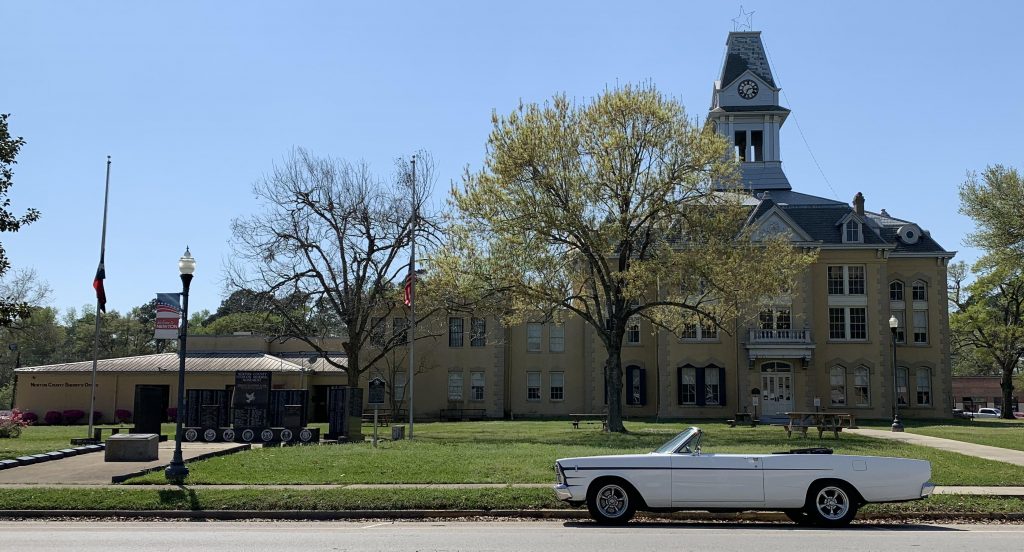This was our seventy-second Courthouse in Texas to visit. That means we are at 28.3% of our goal with 71.7% left to go.
When Newton County was organized in 1846, separated from the eastern part of Jasper County, the town of Quicksand (also called Quicksand Creek) was made the county seat and county officials held their first meetings at the home of Josephus S. Irvine, an early Texas settler and veteran of the battle of San Jacinto. It was soon discovered that Quicksand was not at the center of the county.
A new county seat was selected with the founding of the town of Newton, but a bill passed in the state legislature that moved the county seat to Burkeville instead in 1848.* It was here that the county’s first courthouse was built on land donated by the town’s founder, John R. Burke. The courthouse was a two story wood frame building with a front porch and second story balcony.
A land title dispute at the site of the courthouse in Burkeville led county officials to move the county seat to Newton, the geographical center of the county, in 1853.* The county’s second courthouse was built in Newton that year by Major John Moore, the first county clerk of Newton County. It was a two story wood frame building with a hipped roof. The upper floor of this courthouse was rented by the Masonic Lodge for $50.00 a year. In 1855, an election moved the county seat back to Burkeville but county officials refused to leave Newton and in 1856 the state legislature ruled that Newton should remain the county seat.
Fifty years later, Newton County’s third and current courthouse was built in 1902-03 on the same land as the previous courthouse. It was built from brick made on nearby Caney Creek in the Second Empire style with a sloping, pressed metal roof (containing round and arched dormers and triangular pediments,) a truncated clock tower and corner quoins with a bracketed cornice and bracketed balconies over the entrances. The architects of this courthouse, Martin & Moodie (sometimes spelled Moody,) also designed the 1899 McCulloch County courthouse in Brady and the 1901 Irion County courthouse still standing in the former county seat of Sherwood. In 1929, a bell and clock were installed in the tower of Newton‘s courthouse. The interior of the courthouse was altered over the years, including the addition of false walls to create more office space and closing off the upper balcony of the courtroom to add heating and air conditioning vents. In 1936-37, an annex and jail addition was built onto the south side of the courthouse and the brick exterior of the building was covered in stucco.
On August 4, 2000, an electrical fire in the attic led to the destruction of the courthouse. By the time the smoke was seen billowing from the clock tower, it was already too late to save the building. All that remained was the four outer walls and some interior walls on the first floor. The courthouse sat abandoned for six years before restoration work began with grants from the Texas Historical Commission and other donations totaling around six million dollars. The courthouse was going to be restored to its 1937 condition, the date of the last addition to the building. Continuing problems with architects and contractors led to even more delays. The new clock tower, manufactured in Utah, was installed on May 20, 2009. The restoration was completed in 2012 and the courthouse officially reopened at a rededication ceremony on the courthouse square on December 8, 2012.

